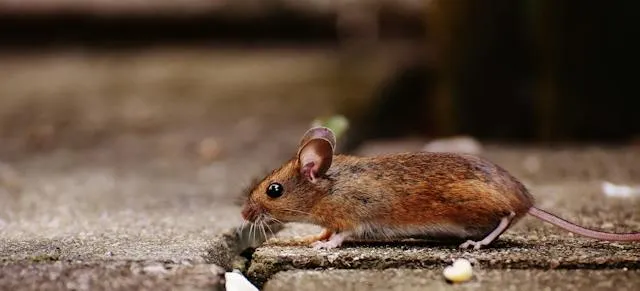Missouri and Kansas, nestled in the heartland of the United States, are home to a diverse array of wildlife, including rodents. These states habitually face an ongoing battle against rodent populations that invade urban areas, farmlands, and natural habitats. These creatures, often considered pests, pose significant challenges by causing property damage and home infestations.
From the larger rodents that wreak havoc on landscapes to the smaller, elusive species infesting homes, each presents unique challenges, contributing to the disturbances in these Midwestern states. Keep reading to learn more about the different types of rodents in Missouri and Kansas!
Small Rodents in Missouri & Kansas
In the lively landscapes of Missouri and Kansas, you’ll spot a bustling community of small rodents dashing through fields, forests, and even city spaces. Though easily missed, these little critters can greatly impact your home and property.
Mice
The white-footed mouse and deer mouse, belonging to the genus Peromyscus, are small rodents found in Missouri that exhibit similar physical characteristics but have distinct ecological roles and behaviors.
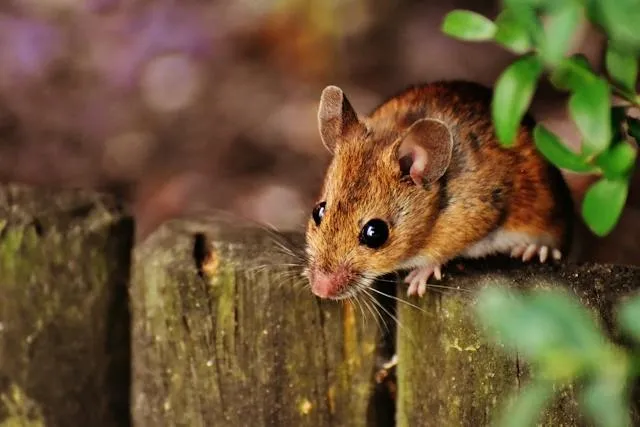
The white-footed mouse, characterized by its bi-colored fur with white feet and underparts, thrives in various habitats, including woodlands, grasslands, and suburban areas. These nocturnal rodents are skilled climbers and adept at nesting in concealed locations.
Their diet primarily consists of seeds, insects, and fruits, contributing to seed dispersal and ecological balance. While they play an essential role in the ecosystem, their proximity to human dwellings can occasionally lead to conflicts.
Similarly, the deer mouse, recognizable by its bicolored fur and relatively long tails, exhibits versatile adaptability to various environments, from forests to agricultural landscapes. Deer mice are proficient climbers and agile foragers, feeding on seeds, nuts, fruits, and insects.
Homeowners often encounter challenges when dealing with white-footed mice and deer mice. These rodents seek refuge indoors, especially during colder seasons, exposing inhabitants to health risks from their scattered waste. Moreover, their habit of gnawing on electrical wiring and stored items poses risks of structural damage to homes.
Effectively managing the presence of these mice and preventing infestations is crucial. Integrating pest management strategies effectively mitigates mouse populations in and around households.
To take a stance against these rodents in Missouri and Kansas, seal entry points, minimize any potential food source, and contact a professional pest control company to eliminate the offending pests.
Additionally, consider conducting regular inspections, particularly in areas like attics, basements, and crawl spaces, to watch for potential infestations.
Voles
Voles are small mouse-like rodents prevalent across Missouri and Kansas. While similar in size and appearance to rats and mice, their distinct features, including compact bodies, short legs, and short tails, set them apart from other common household nuisances.
Missouri and Kansas are home to the prairie vole. As their name suggests, these pests thrive in grassland habitats, preferring to burrow through prairies and open fields. These social rodents are known for crafting extensive tunnel systems in grassy areas.
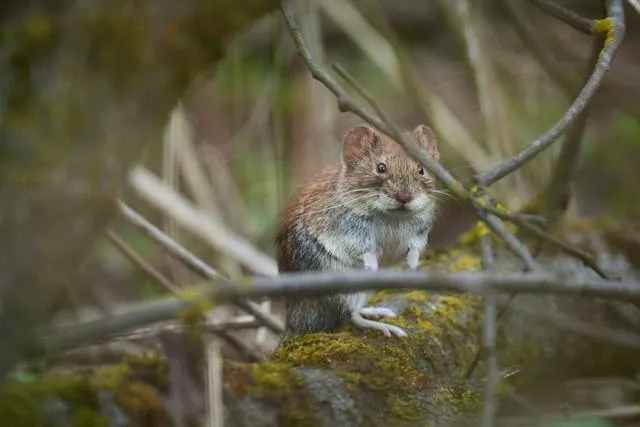
The meadow vole also inhabits both states and is commonly found in grasslands, fields, and meadows. Meadow voles exhibit behaviors akin to prairie voles, displaying active tunneling habits and primarily feeding on grasses and plants. Their foraging behaviors shape vegetation dynamics and contribute to nutrient cycling within local ecosystems.
However, for homeowners and agricultural landscapes, voles can pose considerable challenges. Their insatiable appetite for foliage, notably in orchards, gardens, and crops, often damages plant roots and destroys vegetation.
As they burrow, these rodents create runways, often visible as surface trails or raised ridges in the grass. Their constant tunneling activity disrupts the soil, causing shallow runways that can uproot grass and plants. This damage results in unsightly trails, bare patches, and weakened areas in lawns.
Squirrels
Squirrels can vary in size but generally fall within the small to medium-sized rodents category. The average size of squirrels ranges from approximately 7 to 12 inches in length, not including their tails, which can add an additional 6 to 10 inches. Their size can vary depending on the species and subspecies.
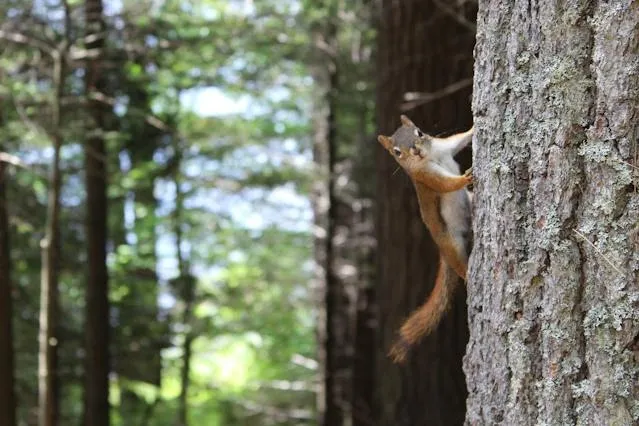
The eastern gray squirrel, recognized by its gray fur and bushy tail, is commonly found in both states. These agile climbers exhibit diurnal behavior, foraging for nuts, seeds, fruits, and occasionally bird eggs. Similarly, the fox squirrel, characterized by its reddish-brown fur, is prevalent across rural and urban landscapes in Missouri and Kansas. Sharing behavioral traits with the eastern gray squirrel, fox squirrels actively forage for nuts and seeds while establishing their nests in tree cavities or leafy dreys.
However, when they sneak indoors, these pests can establish nests in hard-to-reach areas or even contribute to considerable property damage by munching on insulation and damaging wiring.
Their adaptability to various environments, including urban settings, often brings them close to human habitats, occasionally leading to conflicts such as gnawing on structures, damaging ornamental plants, and raiding bird feeders.
Rats: The Most Prevalent Types of Rodents in Missouri & Kansas
The Norway rat, also known as the brown rat, is a robust rodent with a blunt nose and a relatively thick body. These rats are often found in burrows or underground locations; however, they have a particular affinity for areas with abundant food sources.
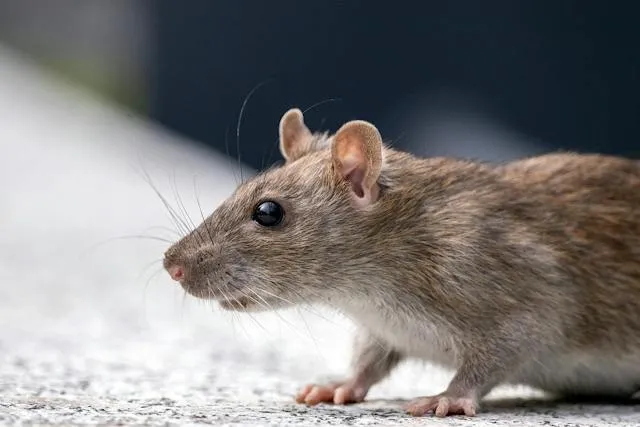
Their opportunistic feeding habits, which include consuming grains, fruits, and even garbage, can lead to infestations near human settlements. Norway rats are often spotted in residential areas, farms, and commercial spaces– looking for a bite to eat no matter the location.
But Norway rats aren’t the only rat species in Missouri and Kansas. The state is also home to another high-climbing rodent.
Roof rats, distinguished by their sleek bodies, large ears, and long tails, tend to inhabit higher areas such as trees, attics, and roofs. They are proficient climbers with nocturnal behavior, foraging for fruits, nuts, and grains in trees and bushes.
These pests can pose challenges for homeowners by inhabiting attics and upstairs areas, gnawing on structures, and potentially transmitting diseases, making effective pest management crucial.
For rural and urban residents in Missouri and Kansas, rat infestations can lead to health risks, property damage, and economic losses. Implementing preventive measures like sealing entry points, maintaining cleanliness, and using traps or baits under professional guidance are key in managing rat populations and preventing infestations.
Beavers: Largest Rodents in North America
Missouri’s and Kansas’s most iconic large rodent is the industrious beaver. Renowned for their exceptional engineering skills, beavers are nature’s architects, wielding their ability to transform landscapes by constructing dams, altering watercourses, and creating wetlands.
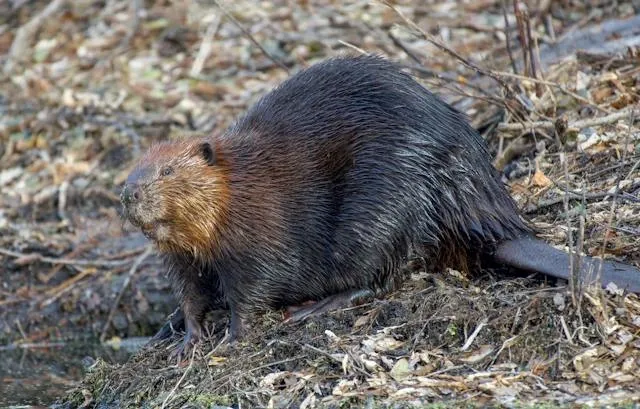
These semi-aquatic mammals prefer habitats near streams, rivers, and ponds. Beavers possess remarkable adaptations, including webbed hind feet for efficient swimming and broad, flat tails for steering in water and slapping the surface to signal danger.
Beavers create dams by felling trees with their powerful incisors, shaving down remaining sticks and logs to fill their dams. They strategically place branches, mud, and rocks to create waterway barriers.
Beavers build dams primarily for shelter, protection, and food storage. These dams create ponds, allowing beavers to construct lodges above the waterline for safety. By raising water levels, dams provide a secure environment, protecting beavers from predators and providing easy access.
Despite their ingenuity, these dams often spell trouble for homeowners. When dam-building, beavers block the water flow in streams or culverts, causing water to rise and potentially flood nearby properties.
They also damage forests and ornamental trees while gathering materials for dam building. Besides utilizing barriers, fencing, or flow devices, you should rely on professional wildlife removal services to best control their activities.
Absolute Pest Control Can Eliminate Rodents in Missouri & Kansas!
When handling rodent problems in Missouri and Kansas, you should contact experts for help. At Absolute Pest Control, we’re your go-to partner in protecting your home, property, or business from pesky rodent infestations.
Our skilled team understands the specific challenges different rodent species pose in these areas. Count on Absolute Pest Control to handle rodent worries with accuracy, care, and expertise.
Contact us today!

